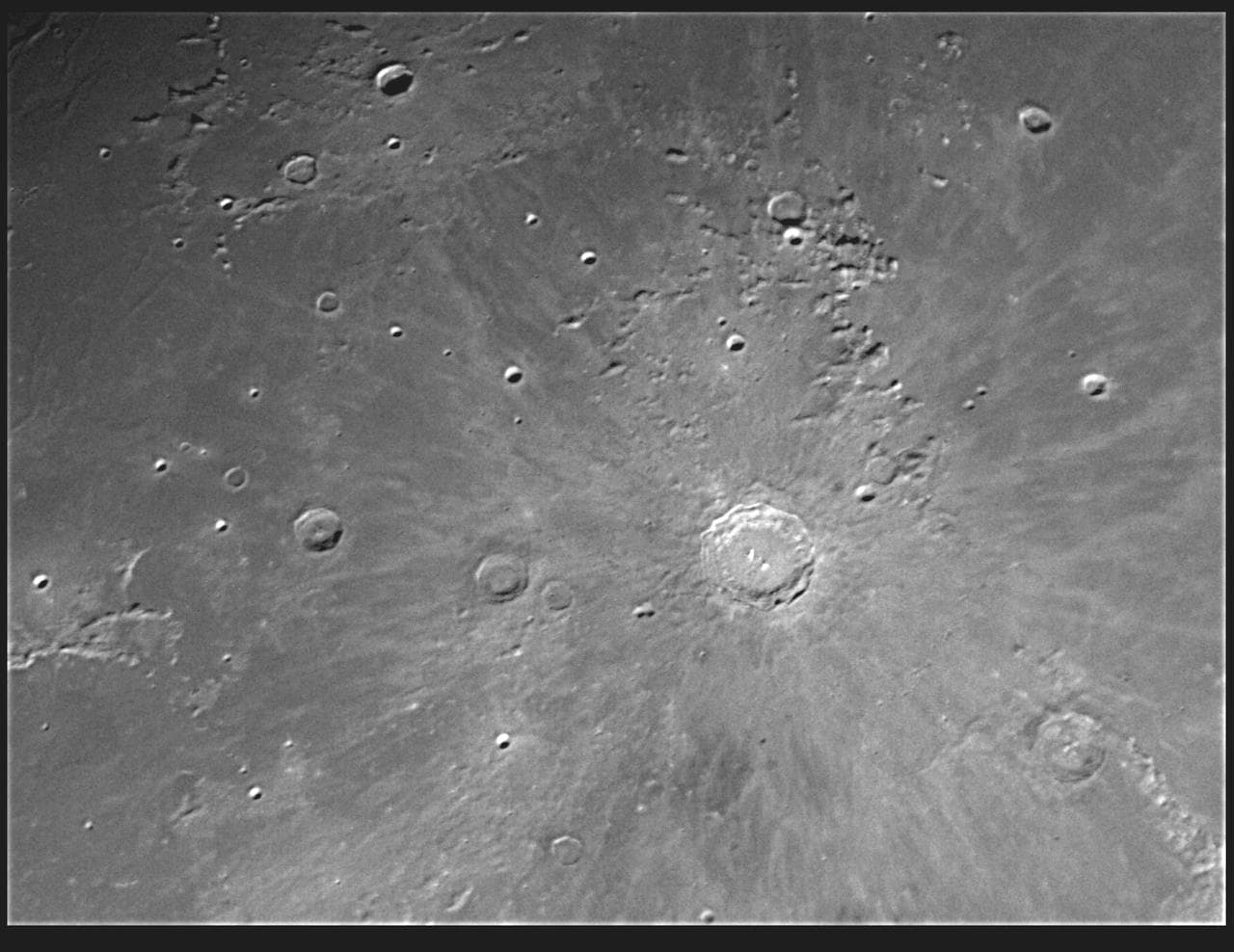
with David Fuller

Crazy, insane, I-shouldn't-do-that magnification
My parents visited for the Thanksgiving weekend. My dad helped me finish putting together my prototype 6" f/10.9 reflector telescope. The tubes had been taped and shellacked. The secondary spider was completed. The primary cell had been purchased. And the mirror had just been refigured and coated. So everything was basically in place; it just needed to be put together.
With a few holes drilled in the tube, I got the spider and secondary in place. Three more holes and I had the primary mirror cell all set. I used a laser collimater to align the two together, and having attached a 13" long dovetail bar to the two tubes using some 1/4-20 screws and bolts, I slapped the whole thing on my SkyViewPro mount / pier.
In went a 25mm eyepiece. Now, given that it was dark, I hadn't aligned the finderscope with the main tube. So even finding the Moon was an exercise in some frustration, initially. When I'd finally got the Moon in the main scope, I adjusted the finder. Even with the lower power eyepiece, I could tell this was a well-figured mirror. The Moon was SHARP.
I bumped it to a 15mm eyepiece. Wow.
Then 9mm. WOW.
Then 6mm - mind you, this is now at 275x magnification. WOWZERS!!
Clear. Sharp. DETAIL. Both my dad and I took turns gazing at it. Then I had a thought.
"Go crazy. Go for INSANE magnification."
Now, this is NOT the thing one is supposed to do with a telescope. 40x to 50x are often the practical maximum magnifications, usually because of the unsteady atmosphere overhead. But the Moon is bright. The image doesn't get dim all that quickly. Plus, this was now a premium mirror - a .975 Strehl ratio. And it was fully-cooled, as it had been sitting outside for plenty of time to be at ambient temperature. So I said to myself, "Why not?"
I put in a 3mm eyepiece. That is 550x magnification!
It was amazing. I don't even remember where exactly I was looking - somewhere on the northern side, near the terminator. Pretty sure somewhere in Mare Serenitatis, but at only 6 arc minutes of diameter in the field of view, it wasn't like I had a lot of context to see!
Not that it mattered. The mountains I was seeing looked enormous. The craters, incredibly detailed. It no doubt helped that the atmosphere just happened to be incredibly steady that night. And I don't recommend this for your average 6" telescope, or even most large scopes for that matter. It's just too much magnification under most circumstances.
But man... it sure looked neat that night. I won't get to repeat that often, but it will be fun to do when I can. I'm really looking forward to the views of Jupiter, Saturn and Mars with this scope.
